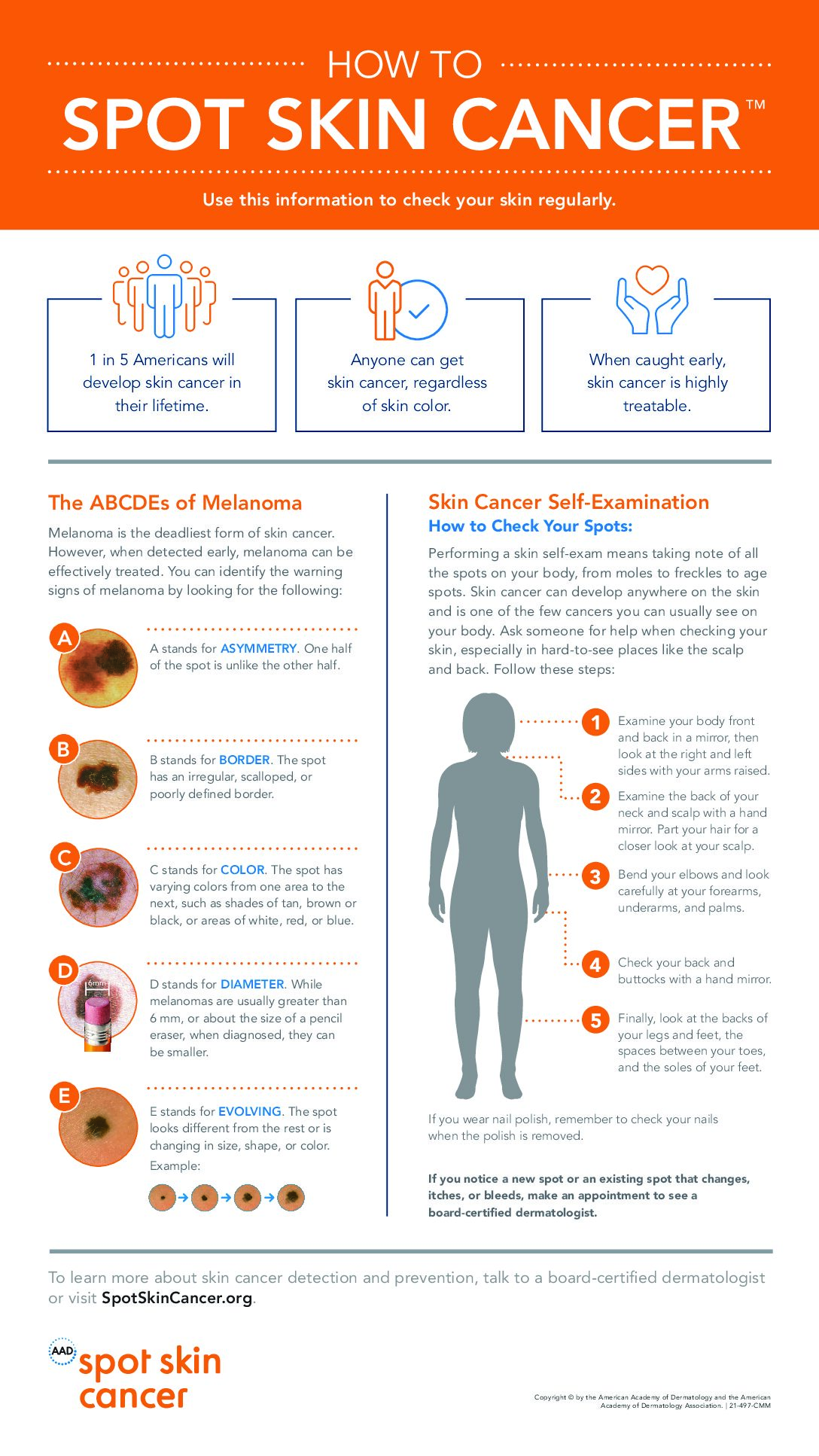Skin Cancer Screening
Skin cancer screening, along with self-skin examinations at home, are the best ways to detect the early signs and warnings of possible skin cancer. Screenings are especially important for those with a personal or family history of skin cancer, history of tanning bed use, more than 100 moles, or excessive sun exposure. Hidden spots covered in everyday life become visible on full body skin exams. Dr. Dolev utilizes dermoscopy to closely evaluate pigmented lesions. Suspicous spots may be followed with serial photography or biopsied.
Actinic Keratoses are small, sometimes scaly or gritty, pre-cancerous lesions that arise from sun exposure and sun damage over time. They are typically treated with liquid nitrogen, but may require repeated treatments, chemotherapy cream, and lifestyle changes to reduce sun exposure.
Malignant Melanoma
The three most common skin cancers in the United States include basal cell carcinoma, squamous cell carcinoma, and malignant melanoma. Overall, melanomas are rare, and constitute only about 1% of all US skin cancer diagnoses. Importantly, however, melanoma causes the majority of deaths from skin cancer. When a melanoma is detected at a very early stage, it is often curable. However, cure is dependent on early detection and appropriate biopsy. Suspicious pigmented lesions are biopsied by Dr. Dolev and sent to dermatopathology to be evaluated at the microscopic level. Treatment is referred to melanoma surgical and medical experts and depends on type, depth, and stage.

Non-Melanoma Skin Cancer Surgery & Treatments
Skin cancer is the most common cancer in the United States, affecting more than one million people every year. One in five Americans will develop skin cancer during their lifetime.
The vast majority of skin cancers are non-melanoma type (including basal cell carcinoma and squamous cell carcinoma.) If caught early, skin cancer cure rates are high. However, people who have had skin cancer are at a higher risk of developing a new skin cancer within the first five years of diagnosis.
There are several treatment options for non-melanomas depending on the type of skin cancer, subtype, size, and location. Protocols are determined by the best outcome for the patient.
Surgical Excision
Following a biopsy, where a small piece of skin is removed and examined under the microscope, the remaining tumor is surgically cut out with margins (a few millimeters of extra skin) and sutured for proper closure. This results in a line scar that fades substantially over time. Excisions are performed in the office using injection of local anesthetic to the skin.
Mohs Micrographic Surgery
A specialized technique following skin biopsy were the removal of cancerous tissue is combined with microscopic review while the surgery takes place. By mapping the tissue layer by layer, less unnecessary skin is removed. This is most appropriate for cancers that are in cosmetically sensitive areas such as the face.
Curettage and Electrodesiccation
This treatment uses a small metal instrument (called a curette) and an electric current to scrape off cancer cells. The technique is easily performed in the office and does not require sutures but may leave a larger scar than surgical excision.
Prescription Medicated Creams
At times, superficial non-melanoma type skin cancers or pre-cancers may be treated with chemotherapy creams that stimulate the body’s natural immune system over the course of weeks to eliminate cancer cells.
Personalized Skin Procedures for Health & Youth
Learn about Injectables
Ultherapy®
Fractional Laser
Kybella®
truFlex®
Juvéderm Collection®
IPL Photofacial
Restylane® Family
For all inquiries call us at 415-923-3970 or send us a message
